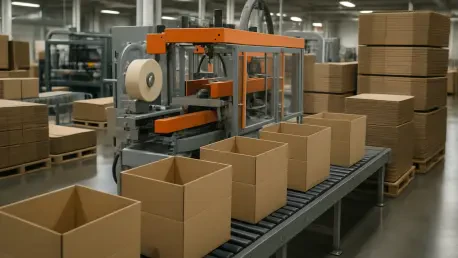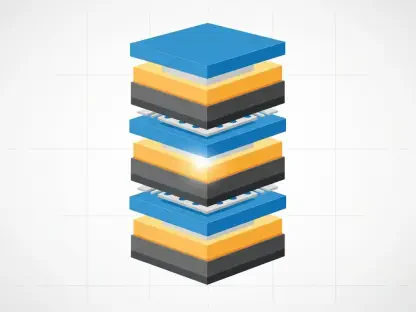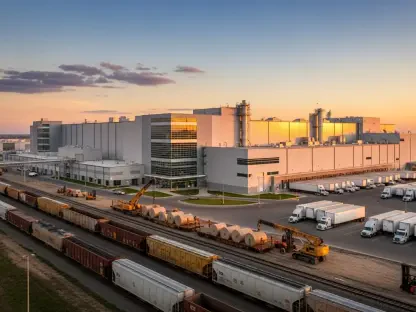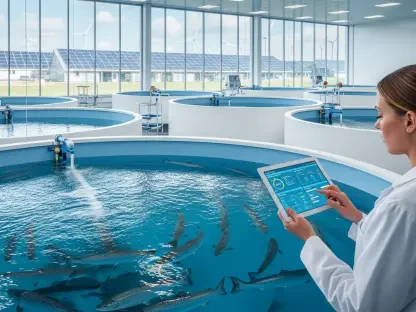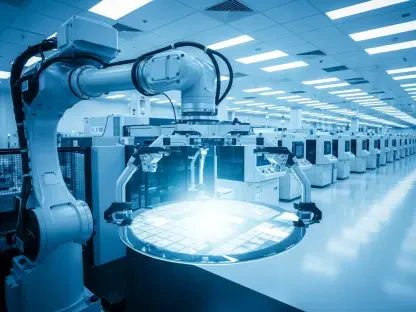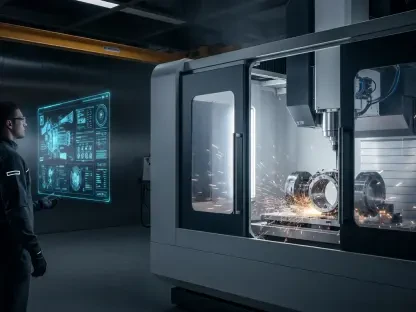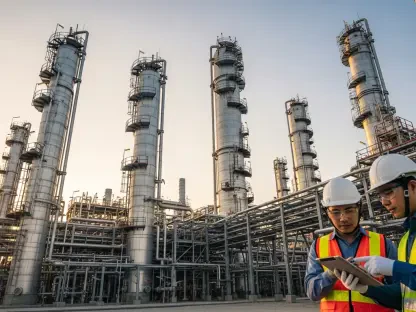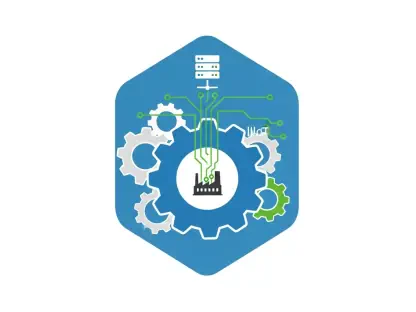The North American packaging industry is experiencing an unprecedented surge of activity as major corporations channel substantial investments into expansions, facility upgrades, and innovative projects to address the escalating demand for packaging solutions. Across the United States and Canada, industry leaders are strategically positioning themselves for growth by enhancing production capacities, adopting cutting-edge technologies, and exploring untapped regional markets. This wave of development goes beyond merely keeping up with current needs—it represents a bold vision to redefine the landscape of packaging for years to come. From well-known giants to specialized innovators, these companies are united by a commitment to meet the diverse requirements of sectors such as food service, consumer goods, and industrial applications. Whether through sprawling new warehouses or advanced machinery installations, the confidence in the sector’s potential is palpable. This article explores the key strategies and emerging trends driving this transformative period in the packaging industry.
Scaling Up Production to Match Market Needs
The pressing need for increased packaging materials across various industries is a primary catalyst for the significant expansions underway. Companies are making massive financial commitments to boost their output and ensure they can meet the growing appetite for their products. Sappi, for instance, has embarked on a $500 million initiative to replace a paper machine at its Somerset Mill in Maine, a move that doubles its annual production capacity to an impressive 520,000 tons, primarily for folding cartons and food service items. This project underscores the urgency to scale operations in response to market pressures. Such investments are not isolated but reflect a broader industry determination to secure a steady supply chain for critical packaging solutions, ensuring that businesses relying on these materials face no disruptions in their operations.
Beyond individual projects, the focus on capacity enhancement reveals strategic foresight among packaging leaders to prepare for long-term demand surges. Hood Container exemplifies this with a $118.9 million modernization of its Louisiana mill, which is set to increase output by 80,000 tons annually. This upgrade is tailored to support industries like food and industrial applications, where packaging plays a pivotal role. Unlike Sappi’s focus on high-volume paper products, Hood Container’s efforts are geared toward specialized board production, showcasing how companies tailor their expansions to specific market segments. These initiatives collectively highlight a proactive approach to not just meeting but anticipating customer needs, positioning firms to thrive in a competitive environment where delays or shortages can be costly.
Broadening Horizons Through Regional Growth
Geographical expansion stands out as a critical strategy for packaging companies aiming to deepen their market penetration and optimize logistics. By establishing new facilities in strategic locations, firms are enhancing their ability to serve regional customers more efficiently. Uline is a prime example, with plans for a 1.2 million-square-foot warehouse in Plainfield, Connecticut, scheduled to open in 2026, a move designed to bolster distribution capabilities in the Northeast. Similarly, TricorBraun’s lease of a 608,000-square-foot facility in Fairfield, California, emphasizes the importance of proximity to West Coast markets. These developments are not merely about adding space but about creating hubs that streamline supply chains and reduce delivery times for clients.
In addition to large-scale distribution centers, some companies are making bold entries into entirely new markets with manufacturing bases. Eco King’s $80.5 million investment in a North Carolina facility marks its first production site in North America, focusing on biodegradable tableware to capture a niche but growing segment. This contrasts with Uline’s distribution-focused approach, as Eco King aims to build a manufacturing presence from the ground up, targeting sustainability-driven demand. Such regional diversification not only mitigates logistical challenges but also positions companies closer to key customer bases, enhancing service reliability. The varied approaches to geographical expansion reflect a calculated effort to balance operational efficiency with market access, ensuring broader reach and resilience against regional supply disruptions.
Innovating With Advanced Technology
Technological advancement is a cornerstone of many expansion efforts, as packaging companies strive to improve efficiency and elevate product quality. Cutting-edge equipment and modernized processes are being deployed to keep pace with the market’s demand for speed and precision. Cosmo Films, for example, is enhancing its operations in Illinois by installing a high-speed slitter capable of processing 3,000 feet of material per minute, a significant leap in production capability for flexible packaging. This investment highlights how technology can transform operational throughput, allowing firms to handle larger orders without sacrificing quality. Such upgrades are vital in an industry where turnaround times can make or break client relationships.
Complementing high-speed machinery, other firms are focusing on specialized equipment to meet specific market needs. Flair Packaging, based in Calgary, Alberta, has introduced a 10-color flexographic printing press alongside a solventless laminator, enabling more intricate and eco-friendly packaging designs. Unlike Cosmo Films’ emphasis on speed, Flair Packaging prioritizes customization and sustainability in its technological upgrades, catering to clients seeking unique branding solutions. These advancements collectively underscore a broader industry shift toward automation and precision, ensuring that products not only meet but exceed modern standards. By integrating such technologies, companies are fortifying their competitive edge, delivering faster and more reliable services in a landscape where innovation is a key differentiator.
Prioritizing Sustainability in Operations
Environmental responsibility has become a non-negotiable priority for the packaging industry, with many firms embedding sustainability into their expansion strategies. Driven by consumer expectations and regulatory mandates, companies are investing in eco-friendly materials and processes to reduce their ecological footprint. Eco King’s new facility in North Carolina is a standout example, focusing on biodegradable products crafted from wood pulp and recycled cardboard, addressing the rising demand for green alternatives in tableware. This initiative reflects a growing recognition that sustainable practices are not just ethical but also commercially viable, appealing to environmentally conscious markets and enhancing brand reputation.
Beyond biodegradable solutions, recycling and resource recovery are also gaining traction as critical components of sustainable expansion. Republic Services is establishing a polymer center in Allentown, Pennsylvania, dedicated to processing recycled plastics such as PET and HDPE, turning waste into valuable raw materials for new packaging. This approach differs from Eco King’s focus on new biodegradable products, as it emphasizes closing the loop on plastic usage through advanced recycling technologies. Together, these efforts signal an industry-wide pivot toward circular economy principles, where waste reduction and material reuse are central to growth plans. Such sustainability-driven projects not only align with global environmental goals but also position companies as leaders in a market increasingly defined by green innovation.
Driving Economic and Community Benefits
The economic ripple effects of packaging industry expansions are profound, with significant contributions to local job markets and partnerships with government entities. These projects often bring hundreds of new employment opportunities, invigorating regional economies. Uline’s upcoming warehouse in Connecticut is projected to create 250 jobs, offering a boost to the local workforce in Plainfield. Meanwhile, state incentives play a crucial role in facilitating such growth, as seen with Hood Container’s Louisiana mill modernization, supported by tax credits that ease the financial burden of large-scale upgrades. These collaborations highlight how industry growth and public policy can align to mutual benefit, fostering economic stability.
In addition to job creation, the establishment of new facilities often catalyzes broader community development through infrastructure improvements and increased local spending. Schütz Container Systems’ $31 million investment in a Missouri facility, also backed by state incentives, exemplifies how such projects can anchor economic progress in smaller regions. Unlike Uline’s focus on distribution roles, Schütz emphasizes manufacturing jobs, providing a different type of economic impact with skilled labor opportunities. These expansions collectively demonstrate the packaging sector’s role as a key driver of regional prosperity, creating a multiplier effect that extends beyond direct employment. By aligning with local governments and investing in communities, companies are not only expanding their operations but also building lasting socioeconomic contributions.
Navigating a Competitive Landscape With Varied Approaches
The diversity of strategies employed by packaging giants reveals a dynamic industry adapting to complex challenges and opportunities. While some focus on core production enhancements, as seen with Sappi and Hood Container’s emphasis on paper and board for food and industrial uses, others like Cosmo Films prioritize flexible packaging through technological innovation. This variety in focus ensures that different market needs are addressed, from bulk materials to specialized solutions, reflecting a nuanced understanding of customer demands. The ability to tailor expansion plans to specific niches allows companies to carve out distinct competitive advantages in a crowded field.
Further illustrating this diversity, initiatives range from Uline’s massive distribution hubs aimed at logistical efficiency to Eco King’s sustainability-focused manufacturing plants targeting eco-conscious consumers. Each approach, though different in execution, shares a common goal of maintaining relevance in a fast-evolving market where demand continues to grow. Unlike Sappi’s large-scale capacity boosts, smaller yet strategic moves like Trioworld Group’s new plant in Indiana show that scale isn’t the only path to success—precision and localization matter too. These varied tactics collectively paint a picture of an industry in robust health, where adaptability and foresight are key to navigating competitive pressures and securing long-term growth.
Reflecting on Industry Milestones
Looking back, the ambitious expansions by leading packaging firms such as Sappi, Hood Container, and Uline marked a pivotal chapter in the evolution of the North American sector. Their substantial investments in capacity, technology, and sustainability demonstrated a collective resolve to tackle immediate market demands while laying the groundwork for enduring progress. As these companies broadened their regional presence and forged economic ties with local communities, they contributed to a legacy of innovation and resilience. Moving forward, the industry can build on these achievements by continuing to prioritize adaptable strategies and sustainable practices. Exploring partnerships for shared technological advancements and advocating for policies that support green initiatives could further solidify the sector’s role as a cornerstone of economic and environmental stewardship.
